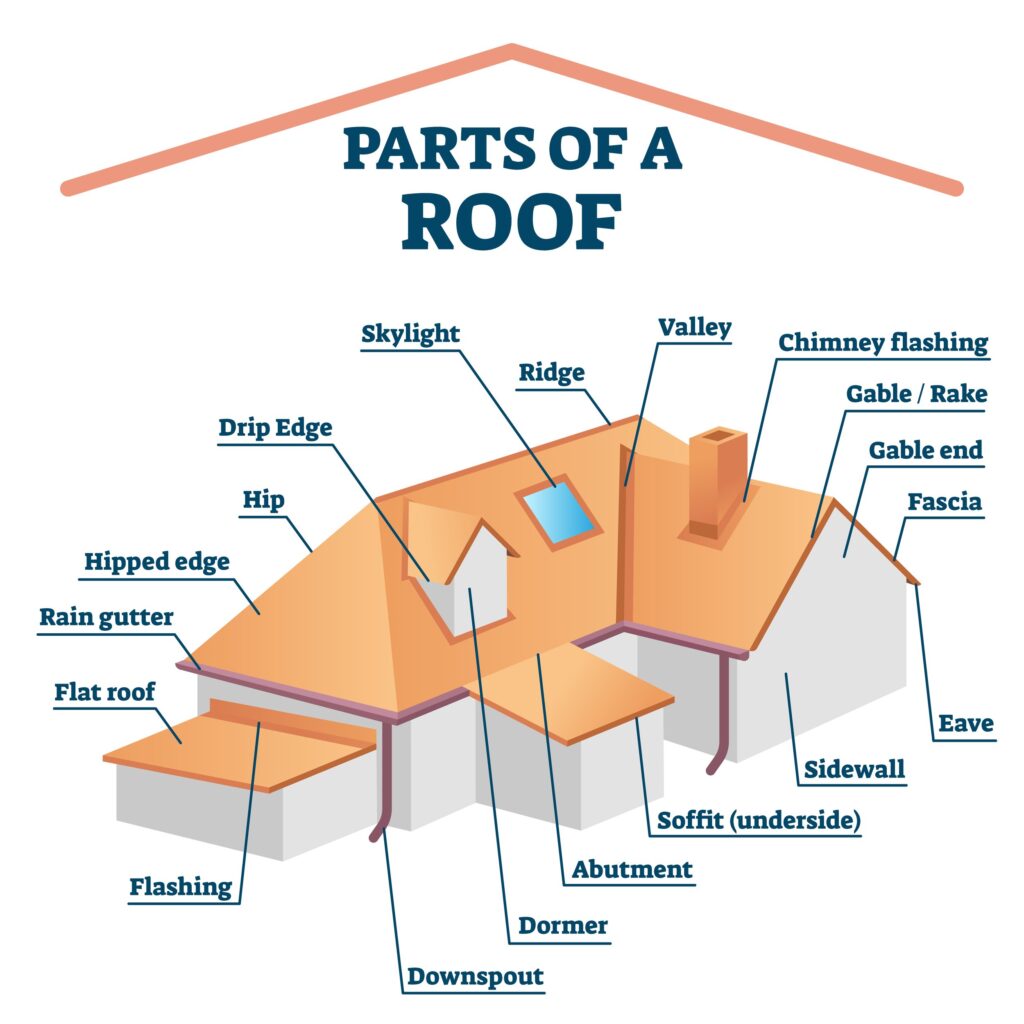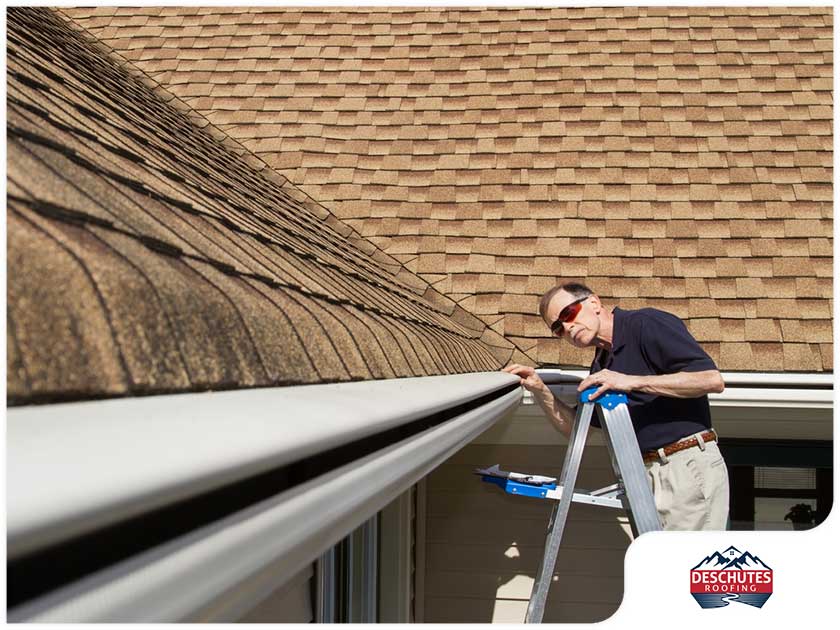Have you ever wondered how long your asphalt shingle roof will last? In this article, we will explore the average lifespan of a typical asphalt shingle roof. Understanding the lifespan of your roof can help you make informed decisions about maintenance and replacement, ultimately saving you time and money in the long run. So, let’s get started and learn more about the durability and longevity of your roof!
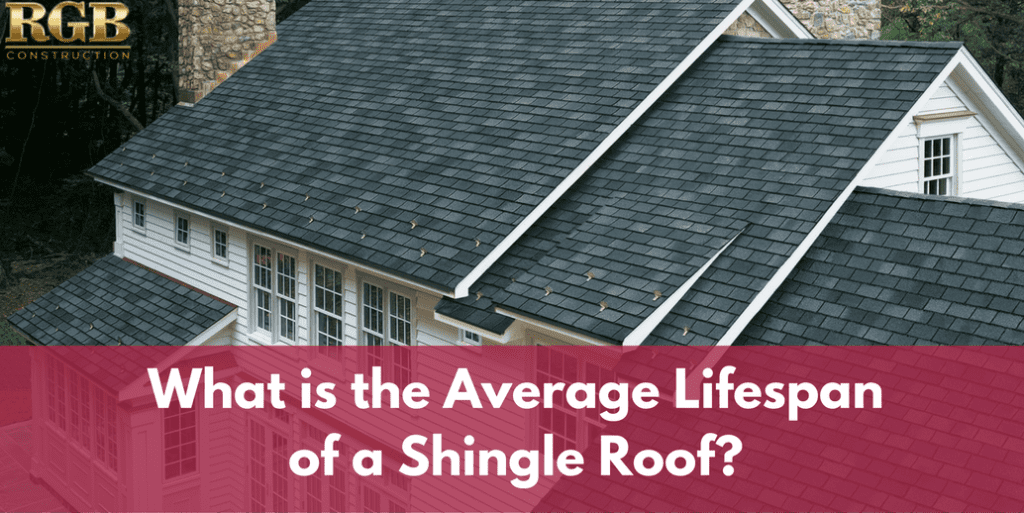

Factors Affecting the Lifespan of Asphalt Shingle Roofs
Asphalt shingle roofs are a popular choice for many homeowners due to their affordability, durability, and versatility. However, the lifespan of an asphalt shingle roof can vary depending on several factors. Understanding these factors is essential for homeowners to make informed decisions about the installation, maintenance, and replacement of their roofs.
Quality of Materials
One of the primary factors that can affect the lifespan of an asphalt shingle roof is the quality of the materials used. Higher-quality shingles are generally more durable and have better resistance to weathering, which can significantly extend the lifespan of the roof. When choosing asphalt shingles, it is important to consider factors such as thickness, granule coverage, and the presence of reinforcement materials.
Installation Techniques
The way an asphalt shingle roof is installed can have a significant impact on its lifespan. Proper installation techniques ensure that the shingles are securely attached to the roof, minimizing the risk of wind damage and water infiltration. Inadequate installation, such as improper nail placement or insufficient use of adhesive, can lead to premature deterioration and reduce the overall lifespan of the roof.
Climate and Weather Conditions
The climate and weather conditions in an area also play a crucial role in determining the lifespan of an asphalt shingle roof. Extreme temperatures, high humidity, strong winds, heavy rainfall, and exposure to UV radiation can all accelerate the aging process of shingles. Homeowners should consider the specific weather conditions in their region when selecting shingles and take appropriate measures to protect their roofs.
Proper Ventilation
Proper attic ventilation is often overlooked but is vital for the longevity of an asphalt shingle roof. Without adequate ventilation, heat and moisture can build up in the attic, leading to premature aging and deterioration of the shingles. This can result in reduced lifespan and increased risk of damage. Proper ventilation allows for the release of heat and moisture, helping to maintain the integrity of the shingles and prolong the lifespan of the roof.
Maintenance and Upkeep
Regular maintenance and upkeep are essential for preserving the lifespan of an asphalt shingle roof. This includes periodic inspections to identify any signs of damage or wear, gutter cleaning to prevent water buildup, removal of debris that can trap moisture and accelerate deterioration, and trimming overhanging branches that can damage the shingles. By promptly addressing any issues and following a regular maintenance routine, homeowners can extend the lifespan of their asphalt shingle roofs.
Types of Asphalt Shingles
Asphalt shingles come in various types, each offering different benefits in terms of aesthetics, durability, and cost. Understanding the characteristics of each type can help homeowners make an informed choice when considering the installation or replacement of their roof.
Strip Shingles
Strip shingles, also known as 3-tab shingles, are the most commonly used type of asphalt shingles. They consist of a single layer of asphalt with cutouts, giving the appearance of three separate tabs. Strip shingles are lightweight, affordable, and easy to install. They provide adequate protection against the elements and have a lifespan ranging from 15 to 30 years, depending on the quality of materials and installation.
Dimensional Shingles
Dimensional shingles, also known as architectural or laminated shingles, are designed to mimic the look of natural materials such as slate or wood shakes. They have multiple layers of asphalt, creating a three-dimensional appearance. Dimensional shingles offer enhanced durability, improved wind resistance, and a longer lifespan compared to strip shingles. They typically last anywhere from 30 to 50 years, making them a popular choice among homeowners seeking both functionality and aesthetics.
Luxury Roofing Shingles
Luxury roofing shingles are the high-end option for homeowners looking to add a touch of elegance and sophistication to their roofs. These shingles often feature intricate designs, unique color variations, and a textured appearance that replicates the look of premium materials such as cedar shakes or slate. With their exceptional durability and extended lifespan, luxury roofing shingles can last 50 years or more, making them a long-term investment for those willing to pay a premium for style and longevity.
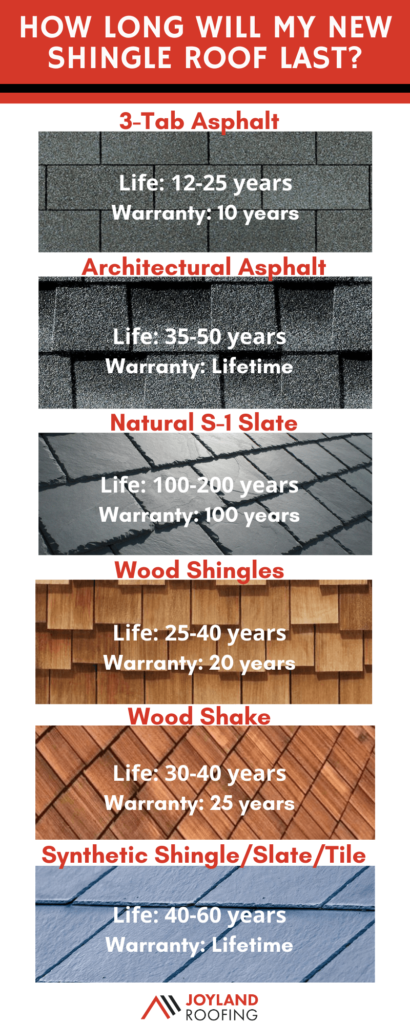

Average Lifespan of Different Types of Asphalt Shingles
The lifespan of asphalt shingles can vary depending on the specific type and quality of materials used. Here is an overview of the average lifespan for each type:
Strip Shingles
Strip shingles have an average lifespan of 15 to 30 years. However, higher-quality strip shingles made from premium materials and installed properly can potentially last up to 50 years or more.
Dimensional Shingles
Dimensional shingles typically have a longer lifespan compared to strip shingles. On average, dimensional shingles can last anywhere from 30 to 50 years, depending on the quality of materials, installation techniques, climate conditions, and maintenance practices.
Luxury Roofing Shingles
Luxury roofing shingles are designed to withstand the test of time and offer exceptional durability. With proper installation and maintenance, luxury shingles can last 50 years or more, providing homeowners with a long-lasting and aesthetically pleasing roofing solution.
It is important to note that these are average lifespans and may vary depending on several factors. Proper maintenance, climate conditions, and installation techniques can all impact the longevity of asphalt shingle roofs.
Signs of Aging and Damage
While asphalt shingle roofs are known for their durability, they are not immune to aging and damage. Recognizing the signs of wear and deterioration is crucial for homeowners to address issues promptly and prevent further damage to their roofs.
Cupping and Clawing
Cupping and clawing are two common signs of aging and weathering in asphalt shingles. Cupping occurs when the edges of the shingles curl upward, while clawing refers to the downward curling of the edges. These issues can be caused by temperature fluctuations, moisture absorption, or poor ventilation. Cupping and clawing make the shingles more susceptible to wind damage and water infiltration, reducing their lifespan.
Missing or Damaged Shingles
Missing or damaged shingles are obvious signs of wear and should be addressed immediately. Strong winds, heavy rainfall, or improper installation can cause shingles to become dislodged or damaged. Any gaps or exposed areas can lead to water penetration, rotting of the underlying materials, and potential leaks. Missing or damaged shingles should be replaced promptly to maintain the integrity of the roof.
Granule Loss
Granule loss is a common issue that can occur as asphalt shingles age. The granules on the surface of the shingles protect them from UV radiation, provide fire resistance, and contribute to the aesthetic appeal. Over time, normal wear and tear, weathering, and foot traffic on the roof can cause granules to become dislodged and accumulate in gutters or downspouts. Excessive granule loss may indicate the need for roof repairs or replacement.
Buckling and Curling
Buckling and curling of asphalt shingles can occur due to various reasons, including improper installation, moisture buildup, or inadequate ventilation. Buckling refers to the distortion or warping of shingles, while curling refers to the upward or downward bending of shingle edges. These issues can compromise the effectiveness of the shingles and make the roof more susceptible to leaks and other forms of damage.
Leaks and Water Damage
Leaks and water damage are some of the most serious signs of an aging or damaged asphalt shingle roof. Water infiltration can lead to rotting of the underlying materials, mold growth, and structural damage. Homeowners should be vigilant for any signs of leaks, such as water stains on ceilings or walls, damp spots in the attic, or water pooling on the roof. Prompt action is necessary to prevent further damage and protect the integrity of the roof.


Maintenance Practices to Extend Lifespan
Regular maintenance is key to extending the lifespan of an asphalt shingle roof. By implementing a proactive maintenance routine, homeowners can identify and address issues before they escalate, ensuring the longevity and performance of their roofs. Here are some essential maintenance practices to consider:
Regular Inspections
Regular roof inspections allow homeowners to identify any signs of damage or wear early on. Inspections should be conducted at least once a year, preferably in the spring or fall, as weather conditions can cause shingle damage during winter and summer months. During inspections, homeowners should look for missing or damaged shingles, cracks, curling, granule loss, and signs of water damage.
Gutter Cleaning
Keeping the gutters clean and free from debris is vital for proper water drainage and preventing damage to the roof. Clogged gutters can cause water to back up, leading to overflow, water infiltration, and potential damage to both the roof and the foundation of the house. Regular gutter cleaning, particularly in the spring and fall, helps maintain the integrity of the roof and prevents costly repairs.
Removing Debris
Debris such as leaves, branches, and twigs can accumulate on the roof and trap moisture, accelerating the deterioration of shingles. Regularly removing debris helps prevent moisture buildup, algae growth, and potential damage to the shingles. Homeowners should use caution when removing debris to avoid causing further damage to the roof or themselves.
Trimming Overhanging Branches
Overhanging branches can pose a risk to asphalt shingle roofs, particularly during storms or strong winds. These branches can damage or dislodge shingles, leading to leaks and other forms of damage. Trimming overhanging branches helps minimize the risk of such incidents and ensures the structural integrity of the roof.
Preventing Moss and Algae Growth
Moss and algae growth can occur in areas with high moisture levels or excessive shade. These organisms can retain moisture, leading to the deterioration and discoloration of shingles. Regularly removing moss or algae and addressing the underlying cause, such as improving sunlight exposure or moisture control, can help prolong the lifespan of the roof.
Implementing these maintenance practices as part of a regular routine can significantly extend the lifespan of an asphalt shingle roof. Homeowners should always prioritize the safety and well-being of themselves and their roofs while performing maintenance tasks, seeking professional assistance when needed.
When to Consider Replacement
While proper maintenance can extend the lifespan of an asphalt shingle roof, there comes a point when replacement becomes necessary. Several factors can indicate that it is time to consider replacing an aging or damaged roof.
Age of the Roof
The age of the roof is a primary consideration when determining whether replacement is necessary. Most asphalt shingle roofs have a lifespan of 20 to 30 years, depending on various factors. If your roof is approaching or surpassing this average lifespan, it may be a good idea to consider replacement, especially if signs of aging or damage are evident.
Extent of Damages
The extent of damages is another crucial factor to consider. If the damages are localized and can be effectively repaired, replacement may not be immediately necessary. However, if the damages are widespread, severe, or recurrent despite repairs, it may be more cost-effective and practical to replace the entire roof.
Persistent Issues
Persistent issues such as leaks, frequent repairs, or recurring damage can indicate underlying problems with the roof. If these issues continue to arise despite proper maintenance and repairs, it may be a sign that the roof is no longer able to fulfill its intended function and replacement is necessary.
Upcoming Renovations or Additions
If you are planning to undertake significant renovations or additions to your home, it may be a good opportunity to replace the roof. A new roof can provide added protection to the structure and materials during the construction process, eliminate the need for future roof removal, and ensure compatibility between the existing roof and the new additions.
Considering these factors and consulting with a professional roofing contractor can help homeowners make an informed decision about roof replacement. While the cost of replacement can be a significant investment, the benefits and long-term savings may outweigh the initial expense.
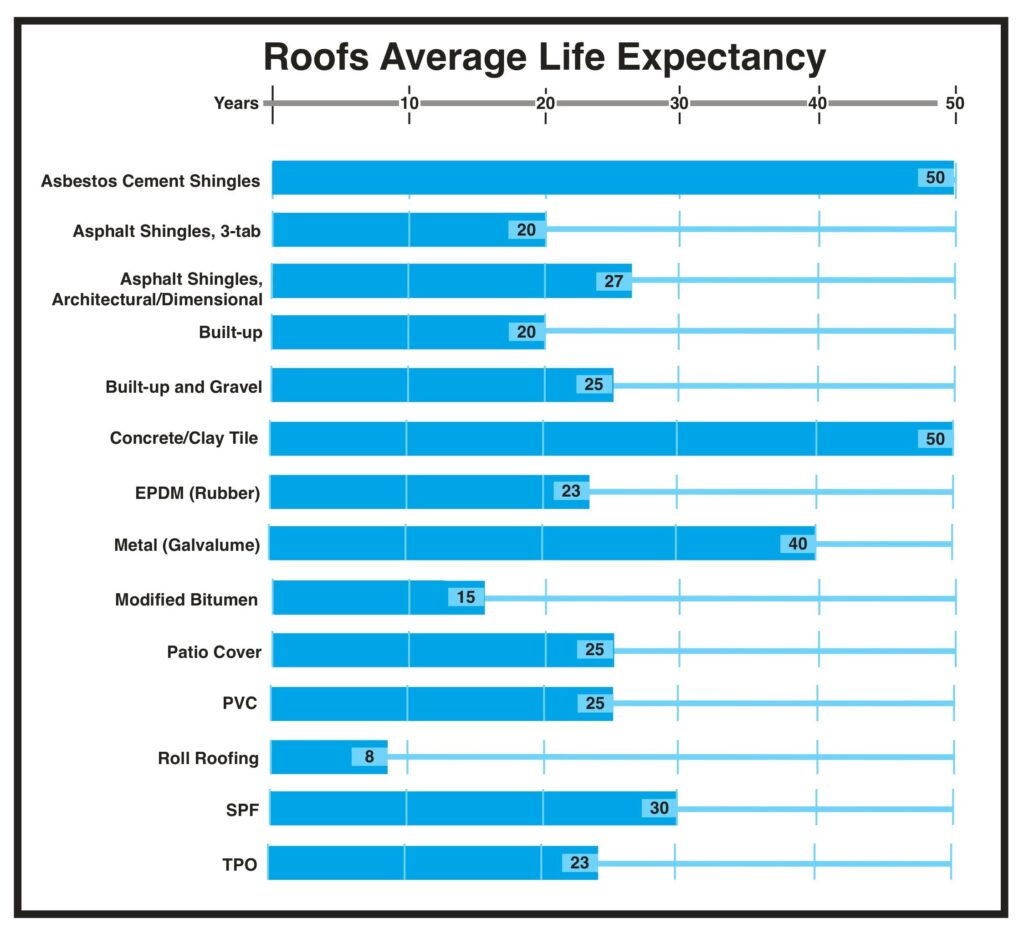

Benefits of Replacing an Aging Asphalt Shingle Roof
Replacing an aging asphalt shingle roof offers homeowners numerous benefits, making it a worthwhile investment in the long run. Here are some of the main advantages of replacing an aging roof:
Improved Energy Efficiency
Newer roofing materials and installation techniques are designed to enhance energy efficiency. Replacing an aging roof with newer, more energy-efficient materials can help reduce heat transfer, resulting in lower cooling costs and increased comfort within the home. Improved insulation and ventilation can contribute to a more energy-efficient and sustainable living environment.
Enhanced Curb Appeal
The visual impact of a new roof cannot be overstated. Aesthetically pleasing asphalt shingles can significantly enhance the curb appeal of a home, increasing its value and attractiveness to potential buyers. With the wide array of colors, styles, and textures available, homeowners can choose a roof that complements their architectural style and personal preferences.
Increased Property Value
Replacing an aging roof can increase the overall value of a property. A well-maintained and visually appealing roof is a crucial aspect of a home’s curb appeal and can make a significant difference in the eyes of potential buyers. A new roof provides prospective homeowners with peace of mind and reassurance that they are investing in a structurally sound and well-maintained property.
Reduced Maintenance Costs
As an asphalt shingle roof ages, it may require more frequent repairs and maintenance to keep it in good condition. Replacing an aging roof eliminates the need for ongoing repairs and reduces the overall maintenance costs associated with an older roof. With a new roof, homeowners can enjoy peace of mind knowing that they have a reliable and long-lasting roofing system.
Considering these benefits, it becomes evident that the investment in replacing an aging asphalt shingle roof offers both immediate and long-term advantages. Homeowners should carefully weigh the costs and benefits and consult with roofing professionals to determine the most suitable course of action.
Factors to Consider in Roof Replacement
Roof replacement involves several critical factors that homeowners should consider to ensure a successful and satisfactory outcome. Here are some essential factors that should be taken into account:
Material Selection
Choosing the right roofing material is essential for the long-term performance and durability of the roof. Consider factors such as the local climate, aesthetic preferences, budget, and energy efficiency when selecting the material. Asphalt shingles remain a popular choice due to their affordability, versatility, and proven track record. However, there are various other materials available, such as metal, wood shakes, or slate, each offering unique characteristics and benefits.
Choosing a Contractor
Selecting a reputable and experienced roofing contractor is crucial for a successful roof replacement project. Look for contractors with a track record of quality workmanship, proper licensing and insurance, and positive customer reviews. Obtain multiple quotes, check references, and ask for proof of insurance to ensure you are making an informed decision. A reliable contractor will guide you through the roof replacement process, answer any questions or concerns, and deliver a reliable and aesthetically pleasing roof.
Obtaining Permits
Roof replacement typically requires obtaining permits and complying with local building codes and regulations. Ensure that you have the necessary permits before starting the project to avoid potential legal issues and complications. Your roofing contractor should be familiar with the local requirements and assist you in obtaining the necessary permits.
Cost Considerations
Roof replacement can be a significant investment, so it is essential to establish a budget and consider the various costs involved. Factors such as the size of the roof, complexity of the project, material selection, and contractor fees can all influence the overall cost. Obtain detailed cost estimates from reputable contractors and factor in any additional expenses such as permit fees or disposal costs. While cost is an important consideration, it is equally important to prioritize the quality and longevity of the roof.
By carefully considering these factors and working with professionals, homeowners can ensure a smooth roof replacement process that meets their needs and budget.


Professional Roof Maintenance and Repair Services
Implementing regular maintenance practices is crucial for preserving the lifespan of an asphalt shingle roof. While homeowners can perform certain maintenance tasks themselves, certain issues may require the expertise and skills of professional roofing contractors. Here are some of the professional roof maintenance and repair services that can help maintain the integrity and longevity of the roof:
Roof Inspection
Regular inspections by professional contractors are essential for identifying any potential issues or signs of damage that may not be visible to the untrained eye. Professional roof inspections should be performed at least once a year or after severe weather events to ensure the roof is in good condition. Experienced contractors have the knowledge and expertise to thoroughly inspect the roof, identify any problems, and recommend appropriate solutions.
Shingle Replacement
Occasionally, individual shingles may become damaged or dislodged and require replacement. Professional roofers have the experience and tools to safely remove and replace shingles without causing further damage to the roof. They can ensure proper alignment, secure attachment, and proper sealing of the new shingles, restoring the functionality and appearance of the roof.
Leak Repairs
Leaks can occur due to various factors, such as damaged shingles, flashing issues, or improper installation. Finding and repairing leaks can be challenging for homeowners without the necessary expertise and equipment. Professional roofers have the knowledge and tools to identify the source of leaks and perform effective repairs, preventing further water damage and potential structural issues.
Gutter Cleaning and Repair
Clogged or damaged gutters can cause water to back up and overflow, leading to roof damage and potential leaks. Professional roofers can perform thorough gutter cleaning, removing debris and ensuring proper water flow. They can also identify and repair any issues with the gutters, such as loose or damaged sections, to maintain effective water drainage and protect the roof.
Flashing Replacement
Flashing, which is typically made of metal, is used to seal vulnerable areas of the roof, such as joints and transitions, to prevent water infiltration. Over time, flashing can become damaged, corroded, or improperly installed, compromising its effectiveness. Professional roofers can assess the condition of flashing and perform necessary repairs or replacements, ensuring proper waterproofing and preventing leaks.
By utilizing professional roof maintenance and repair services, homeowners can benefit from the expertise and skills of trained contractors. These professionals can address any issues promptly, provide long-lasting solutions, and help homeowners maintain a durable and reliable asphalt shingle roof.
Conclusion
Asphalt shingle roofs offer homeowners a cost-effective and versatile roofing solution. The lifespan of an asphalt shingle roof can be influenced by various factors, including the quality of materials, installation techniques, climate conditions, ventilation, and maintenance practices. Recognizing the signs of aging and damage allows homeowners to address issues promptly and extend the lifespan of their roofs.
Different types of asphalt shingles, such as strip shingles, dimensional shingles, and luxury roofing shingles, offer varying levels of durability, aesthetics, and lifespan. The average lifespan of asphalt shingles can range from 15 to 50 years, depending on the specific type and quality of materials used.
Regular maintenance practices, including inspections, gutter cleaning, debris removal, and vegetation control, are essential for preserving the lifespan of asphalt shingle roofs. Promptly addressing signs of aging or damage, such as cupping, clawing, granule loss, or leaks, is crucial to preventing further deterioration and avoiding costly repairs.
When considering roof replacement, homeowners should evaluate factors such as the age of the roof, extent of damages, persistent issues, and upcoming renovations or additions. Replacing an aging asphalt shingle roof offers benefits such as improved energy efficiency, enhanced curb appeal, increased property value, and reduced maintenance costs.
Numerous factors should be considered in roof replacement, including material selection, choosing a reputable contractor, obtaining permits, and cost considerations. Working with professionals ensures a smooth roof replacement process that delivers a reliable and aesthetically pleasing roof.
Professional roof maintenance and repair services, such as roof inspections, shingle replacement, leak repairs, gutter cleaning, and flashing replacement, help homeowners maintain the integrity and longevity of their asphalt shingle roofs. By utilizing these services, homeowners can address any issues promptly, prevent further damage, and enjoy a durable and long-lasting roofing solution.
In conclusion, understanding the factors that affect the lifespan of an asphalt shingle roof and implementing appropriate maintenance practices are essential for homeowners to maximize the lifespan and performance of their roofs. With proper care and attention, asphalt shingle roofs can provide protection, aesthetic appeal, and peace of mind for many years to come.


